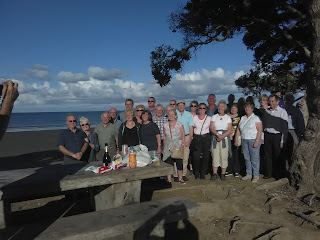Rocky Mountain Rail - Banff
Banff, Alberta
The body of water that the Stoney Indian people knew as Ho-run-num-nay, the “Lake of the Little Fishes,” lies in a valley close to some of the higher peaks in the Canadian Rockies. The first non-native to behold it was Tom Wilson, who – led by a Stoney guide – reached its eastern shore in 1882.
The completion in 1885 of a transcontinental line on the Canadian Pacific Railway route, along with the construction in 1890 of the first commercial accommodation at Lake Louise, attracted increasing number of visitors. The Lake Louise area became an international destination, largely due to promotion by the CPR.
Pioneers such as Walter Wilcox and Samuel Allen explored and mapped much of the vicinity. The surrounding mountains became a mecca for alpinists. Their activities created notoriety for the area when Philip Stanley Abbot became the first person to die in a climbing accident in North America when he fell during an attempt on Mt. Lefroy in 1896.
Legislation had created the Lake Louise Forest Park in 1892, but it was not until 1902 that the area including Lake Louise and Moraine Lake came under the protection of an expanded Banff National Park. Recreational hikers were drawn by a proliferation of trails, such as those to Lake Agnes and the Saddleback – built in the early 1890s under the supervision of Willoughby Astley, first manager of the original Chalet. A number of tea-houses provided to cater to hikers proved popular (two of them, at the Plain of Six Glaciers and Lake Agnes, are still operating).
The works of the many painters who responded to the Lake Louise area, among them Belmore Browne, Lawren Harris of the Group of Seven, and Banff residents Peter and Catharine Whyte, helped to further spread recognition of the area. Road construction facilitated access, and visitors flocked to see for themselves the renowned scenery.
The Lake Louise area has become one of the premier attractions of Banff National Park, and indeed of the entire Canadian Rockies. You can marvel at the panoramic vistas from a distance, but to gain a better appreciation of these fabled environs, head out on foot to experience their fascination firsthand.
The famous Spiral Tunnels on the CP Rail Line were opened on September 1st, 1909. The route called for two tunnels driven in three-quarter circles into the valley walls. The construction and extra track effectively doubled the length of the climb and reduced the gradient to 2.2%. The labor force to build these tunnels through sheer rock amounted to about a thousand, and the cost was about 1.5 million Canadian dollars. This is one of the steepest, most scenic railway lines in North America, crossing the kicking horse river, and running under Mount Ogden and Cathedral Mountain, towards the town of Field, BC.
Featuring a crystal clear blue-green lake, a valley hemmed in by ten lofty mountain peaks, and a hanging valley of larches beneath the third highest mountain in the Canadian Rockies, it’s little wonder that Moraine Lake rivals Lake Louise in scenic grandeur and fame. One look from the Rockpile at the lake’s edge, and you’re hooked, the scene from the back of Canada’s old $20 bill emblazoned into your memory forever. Be sure to bring your camera for pictures of the spectacular view of the lake and the Valley of the Ten Peaks (the series of ten mountain peaks that runs from the edge of the lake along the left side of the entire valley).
At the shoreline in front of the parking lot, the Rockpile (literally, a pile of rocks!) is on your left and the lodge is on your right, while straight ahead is the lake and the start of the Wenkchemna peaks. To your right high above the lodge is the icy peak of Mount Temple, the third highest mountain in the Canadian Rockies at 3,540 metres (11,500 feet).


Comments
Post a Comment